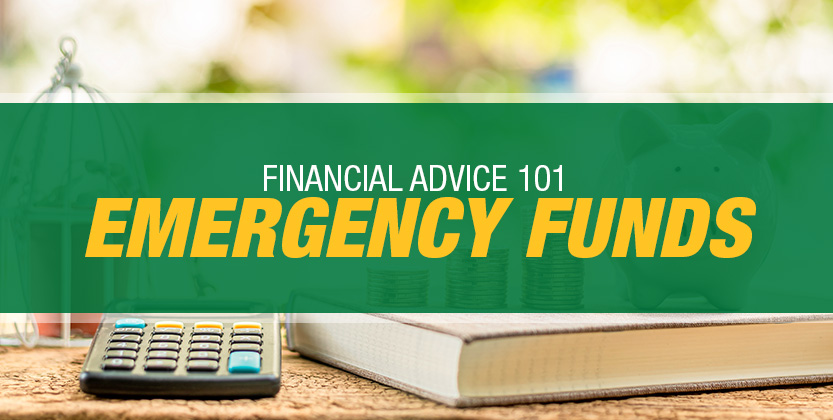
The Beginner’s Guide to Emergency Funds
Budget management can be incredibly stressful, especially for those who are new to financial literacy. Being unprepared for an emergency can throw an additional wrench into otherwise sound financial plans, leaving people with little choice but to take on additional debt. Thankfully, there’s a simple solution: start and maintain a solid emergency fund.
What Is an Emergency Fund?
An emergency fund is an easy-to-access cache of money set aside to cover unexpected expenses. It’s a great alternative to relying on an Emergency Loan Provider if you suddenly find yourself facing financial emergencies such as:
- Urgent, unplanned home repairs
- Medical bills incurred due to unexpected injury or illness
- Unexpected veterinary bills
- Needing a new car after an accident
- Losing a job or another vital source of income
You should never use the money in your emergency fund to make nonessential purchases. You can always save up for things like a much-needed vacation or a new wardrobe, but there’s no way to predict when a true emergency will come up. If you have cash in reserve to handle the situation, you should be able to pay for necessary care, repairs, or daily needs without tapping into your investments or other savings or taking on additional debt.
Why Everyone Should Have an Emergency Fund
According to the US Federal Reserve, four in ten Americans would be unable to cover an emergency expense of $400 without using credit cards, taking out loans, or turning to family for help. The problem isn’t just that some people make less money than others. Many Americans are unaware of how important it is to maintain an emergency fund, or they assume that only high earners can afford to earmark cash to deal with unexpected expenses.
The good news is, it’s easier than you might think to start putting aside money for a proverbial rainy day. You don’t have to do it all at once. Once you’ve decided to prioritize emergency savings, you can set aside whatever you can afford from each paycheck until you’ve met your goal. Even if you can only put aside a few dollars every month, it will add up eventually.
How Much to Save
Financial experts’ recommendations for how much to set aside in your emergency fund vary, as do individual situations. Ideally, a well-stocked emergency fund should cover at least three to six months’ worth of living expenses, but even an extra $1,000 put aside to pay unexpected bills can make a big difference when it comes to your financial well-being.
Try to view your emergency fund as a destination, not a starting point. First, decide how much you should aim to put aside, considering factors such as:
- Your household size
- How many people contribute to the family’s finances
- Your average monthly expenses
- Your job security
- The stability of any other income sources
If you’re a single person who works in a volatile industry or as a freelance contractor, you may need to pad your emergency fund more than someone who shares finances with a spouse or partner and works a well-protected union job. You’re better off aiming for a full year of living expenses as an emergency savings goal, but your starting point is the same. Set up an account and start putting aside whatever you can from each paycheck until you’ve reached your goal.
Tips for Getting Started
The first thing to do if you want to set up an emergency fund and don’t have other savings to draw from is to sit down and examine your budget. Make a list of everything you and your dependents have purchased in the past month and make separate lists of essential and nonessential expenses.
Essential expenses are things like rent or mortgage payments, food, utilities, and car payments. Nonessential expenses are things like clothing, eating out at restaurants, and entertainment. Separating your essential expenses from things that are nice but not strictly necessary will give you an idea of what you can eliminate to start putting money aside.
If you’re having trouble coming up with ways to cut back your monthly budget, you can also consider finding new strategies for increasing your family’s income. Depending on your situation, that might mean taking on a second job, finding gig work, or even selling items that you don’t use anymore. Once you’ve set aside an initial deposit, you can also:
Automate Your Savings
Almost all banks allow customers to set up automatic transfers from their checking accounts to savings. You may also be able to have part of your paycheck direct deposited into your emergency account. Taking these simple steps can help to reduce temptation and stop you from spending extra money on non-essential expenses.
Save Windfalls
If you’ve received an unexpected windfall in the form of a small inheritance, a tax refund, or an economic impact payment, don’t spend it immediately. Put the money aside in the emergency fund and forget about it until you really need it. Since you weren’t expecting the money, setting it aside should not impact your monthly budget.
Use Cashback Apps
Cashback apps pay users a percentage of what they spend on common purchases like dining or shopping. Sign up for at least one of them, then have the cash deposited directly into your emergency savings account.
Check Tax WIthholdings
Many Americans assume that they should be getting large refunds at tax time, but that actually means their employees are withholding more money than they need to from workers’ paychecks. Adjusting tax withholding can dramatically reduce your tax refund, but it will give you extra money on each paycheck that you can use to grow your emergency fund.
Where to Keep an Emergency Fund
When you set up an account for your emergency fund, make sure the money will be easily accessible. Keep in mind that the amount of interest you could earn on the money is less essential than having it available when you need it. You should never invest money earmarked for emergency expenses. Instead, keep it in a high-yield savings account that offers a competitive interest rate without placing your money at risk.
The Bottom Line
No matter how much or how little money you make, you should prioritize creating an emergency fund. It will give you the financial freedom to tackle unexpected expenses without going into debt and the peace of mind of knowing that should you lose your job, you’ll be able to get by until you find a new one. Start saving now to make sure you’ll have everything covered in the future.
Cary Silverman is a consummate entrepreneur having sold multiple companies during his 20 years of business experience in the financial industry, but for him, it isn’t about the money. His success is rooted in his passion to focus on doing something better today than it was done yesterday. These days, he’s the CEO of Waldo General, Inc. that oversees the operation of King of Kash.

